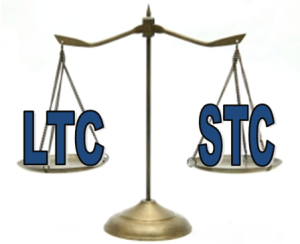In our previous article: Observation VS Inpatient, we illustrated how a Short Term Care (STC) plan can cover potential out-of-pocket costs. In this article we will relate STC to Long Term Care (LTC) and discuss the many beneficial details of this new trending product.
Short Term Care Coverage
While the cost of STC is the more affordable coverage between the two, it is not the equivalent to that of a LTC plan. The STC plan is designed for temporary stays in the nursing home and/or short term recovery in the  policyholder’s home. Unlike traditional skilled nursing facility care under Medicare, the STC policy will cover all 3 levels of care (not just skilled) and it will even pay out in the event that the client was not admitted into a hospital prior to being admitted to the nursing home. A frequent question among agents regarding STC is to whether or not it will cover Alzheimer’s patients. STC plans will cover Alzheimer’s disease, but due to the fact that these plans typically will have a maximum benefit period of 1 year it will not be the answer to the client’s financial needs if they are in the nursing home for long term stay. Other situations where a client can use a STC plan is to use the plan to fill the elimination period of an existing LTC plan since there is a 0-day elimination period that only nominally affects the monthly premium cost. Many consumers purchased LTC plans with 90 day elimination periods when the average daily cost of care was about $110 per day, thinking they can afford the out-of-pocket cost. The problem is that 15 years later, the daily cost of care has almost doubled. The client who took a 90 day elimination period figuring they could cover the first $9,900 out of pocket now has to cover $19,080 since the average daily cost in the United States has risen to $212 per day. Short Term Care can be customized starting at 30 days to cover that elimination period cost.
policyholder’s home. Unlike traditional skilled nursing facility care under Medicare, the STC policy will cover all 3 levels of care (not just skilled) and it will even pay out in the event that the client was not admitted into a hospital prior to being admitted to the nursing home. A frequent question among agents regarding STC is to whether or not it will cover Alzheimer’s patients. STC plans will cover Alzheimer’s disease, but due to the fact that these plans typically will have a maximum benefit period of 1 year it will not be the answer to the client’s financial needs if they are in the nursing home for long term stay. Other situations where a client can use a STC plan is to use the plan to fill the elimination period of an existing LTC plan since there is a 0-day elimination period that only nominally affects the monthly premium cost. Many consumers purchased LTC plans with 90 day elimination periods when the average daily cost of care was about $110 per day, thinking they can afford the out-of-pocket cost. The problem is that 15 years later, the daily cost of care has almost doubled. The client who took a 90 day elimination period figuring they could cover the first $9,900 out of pocket now has to cover $19,080 since the average daily cost in the United States has risen to $212 per day. Short Term Care can be customized starting at 30 days to cover that elimination period cost.
Some of the Short Term Care plan benefits also include:
- The plan is fully customizable for the client’s specific needs
- The cash is paid directly to the client
- An optional Home Health Care Rider is available
- Optional Simple or Compounding Inflation Protection rider is available
- Zero-Day Elimination Period
- 6 Month Restoration of Benefits Period
Cost Comparison
Long Term Care (LTC) is a huge financial investment for the client. Looking at the basic cost of a LTC plan, an average client will purchase a policy that pays $100 per day ($3000 a month) for 3 years. This will provide the 
Once again, remember that STC is not a replacement for LTC but can help many people who could not otherwise afford the high premiums for a LTC plan. In the example above, many retirees would lose a large chunk of their retirement savings if they had to cover $54,000 in recovery costs at a nursing home.
Underwriting Comparison
The underwriting for a STC plan is typically simplified issue whereas a LTC plan may require a face to face interview and doctor’s records. In a typical STC application you will see a 2 year look back on serious illnesses, cognitive diseases, assistant living, and hospital care within the 5 questions. Most LTC plans, however, requires full, intensive underwriting along with a Suitability Form to make sure clients can afford the cost. STC’s lenient underwriting can be very attractive to older clients.
To be clear, this article is not advocating using a STC plan in place of LTC or saying that one plan is greater than the other. Both are two unique policies with their own intended uses. With that being said, having some coverage in force is always better than having none at all, especially in times when the client needs it most.
Contact Senior Benefit Services to find out how you can start offering Short Term Care today!
*Rates based on 65 year old male/select rating/3% compounding inflation protection/90 day elimination period (MutualCare Secure Solution)
**Rates based on a 65 year old, Recover Cash, Short Term Care